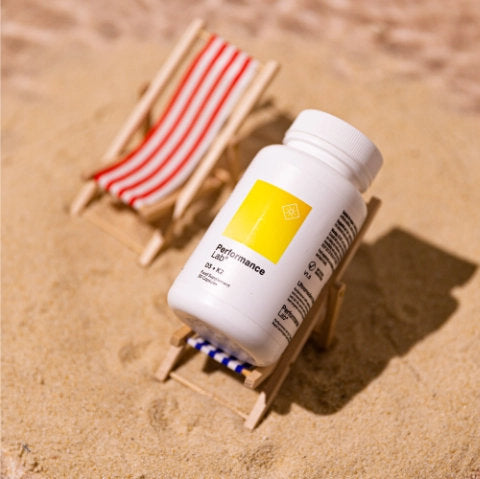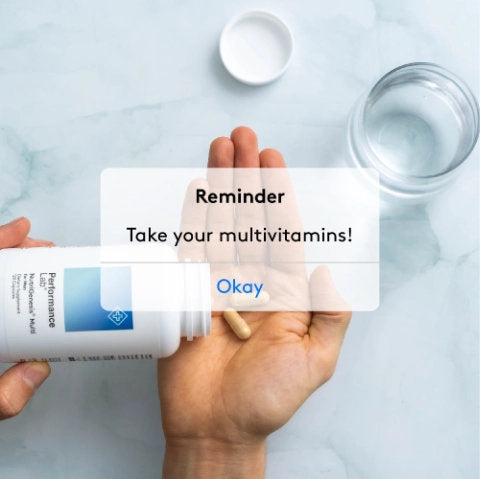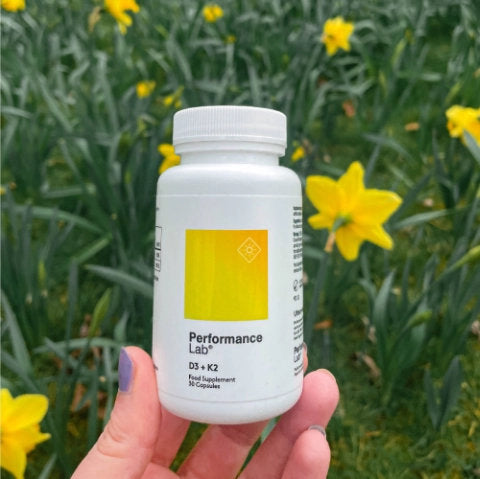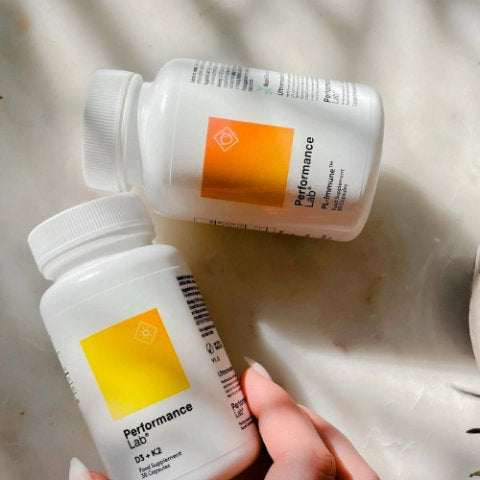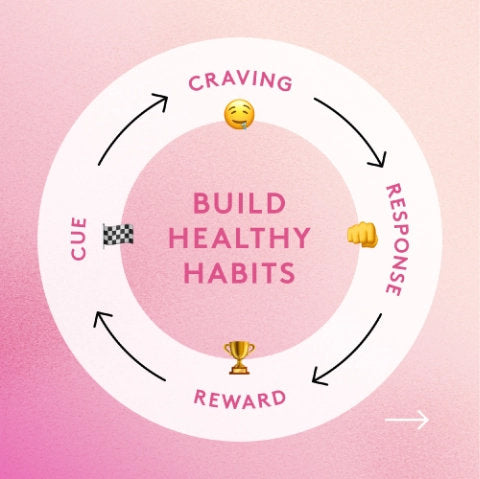A look at the importance of carbohydrate and glycogen levels for athletes. Some signs and symptoms of depletion. And how you can keep your levels topped up.
Feel tired, fatigued and weak? Been dieting hard, gone low-carb or just not been fueling your body effectively?
You might be glycogen depleted.
Glycogen is your primary fuel system during high-intensity exercise. Powering you through rep after rep, set after set, session after session.
But how do you know if your stores are depleted? And what impact does it have on your strength, endurance and overall performance?
Let’s take a look…
Key points:
- Glycogen cannot be stored indefinitely. Levels need to be topped up regularly.
- The average person stores around 400 g (2,000 kcal) of glycogen. Stored in muscles, liver and blood.
- Glycolysis is the predominant energy system used during high-intensity exercise. This system can only use glycogen for fuel.
Glycogen, Bioenergetics and Performance

Before we get into the warning signs of glycogen depletion, it’s important to understand what it does and how it influences athletic performance.
Glycogen is the fuel to power you through workouts. When you eat a carbohydrate-based food, your body releases a peptide hormone called insulin which signals glucose into cells for energy.
Glycogen is the stored form of carbohydrates. Glycogen is stored in your liver and blood, but mostly in muscle tissue, playing a crucial role in glycogen metabolism. If there’s any glucose left spare, your body binds the glucose molecules together and stores them as complex polysaccharides in your muscle tissues and liver.
The more muscle you have, the more glycogen you can store in your body. For an average person, that’s around 400 g – roughly 2,000 kcal’s worth. Of that, around 75% is stored in muscle, some in your liver and a tiny bit in blood.
Every time your body is low on glucose it taps into stored glycogen and breaks it down for energy. This means the more active you are, the more glycogen you need.
But more isn’t always better.
You need to maximize glycogen stores to have the energy you need. But too much glycogen can lead to an excess - and that surplus is stored as fat.
Factors that affect your ability to store glycogen include:
- Muscle mass
- Gender
- Activity levels
- Level of fitness
Anaerobic glycolysis is the predominant energy system during high-intensity exercise
Adenosine triphosphate (ATP) is a complex molecule used by all cells in your body for energy. It drives all our chemical processes and is vital for life. During exercise, the rate of ATP utilization increases proportional to the intensity.(1) In other words, the harder your workout - the more energy you use.
Decreasing exercise intensity can help maintain glycogen stores by reducing carbohydrate combustion and increasing fat combustion.
At rest (or at low intensities) ATP is produced within a special organelle called the mitochondria - using both fatty acids and glucose. It’s a process called aerobic glycolysis.
The journey that fat and glycogen take to generate ATP is long and complex. And when your body only requires a trickle of ATP at a constant rate, that long-winded process is worth it.
But at higher intensities (generally above 70% maximum heart rate for most people) the rate of ATP needed is too high. That long-winded process is no longer fast enough to support the increased need for energy and you’ve reached what physiologists refer to as the anaerobic threshold.(2)
At this point your body makes a decision. During anaerobic glycolysis, your cells use glycogen to generate the energy bond called ATP.
If it switches from aerobic glycolysis (which uses fat and glucose for energy) and chooses anaerobic glycolysis instead, it can generate ATP faster. How? By skipping the use of fatty acids and bypassing the mitochondria.
Now, it’s a bit of a trade-off. Because the mitochondria provide much more ATP. Anaerobic glycolysis can only use glycogen for fuel. But when you’re exercising hard, your body will do everything it can to keep flooding your cells with ATP.
How much ATP you can produce is down to many variables - one of those is the glycogen content in the muscle. In other words, glycogen is hugely important during high-intensity workouts.
What is glycogen depletion? Warning signs and symptoms of depleted glycogen stores…

Your body gets glucose for energy, either from the food you eat or by tapping into stored glycogen. If there’s no glycogen reserves, your body dips into protein stores.
When you eat a carb-rich meal your cells take what they need and dump the rest into glycogen reserves ready for a rainy day. When blood glucose levels drop, there’s some liver glycogen ready and waiting to top-up glucose levels.
To maintain adequate glycogen storage, a diet high in carbohydrates is important.
However, if your carbohydrate intake isn’t high enough - and you use up all the stored glycogen in that muscle, you’ll become depleted. And get this… you can’t borrow glycogen from other muscles either. So once its stored there, it can’t be transported to other muscles that are depleted and need fuel for exercise.
According to physiology data(3), if glycogen depletion is only 40 mmol/kg* and sufficient carbohydrates are ingested immediately after exercise - and again at 30-minute intervals - complete glycogen restoration can occur after four or five hours.
(* This is measured as wet weight).
However, if glycogen depletion is 150 mmol/kg wet weight, full repletion might take up to 24 hours.
This is because the maximal rate of glycogen synthesis is 10 mmol/kg wet weight per hour.
And this rate can only be maintained for only approximately four hours before it slows to roughly 50% of maximum (four - six mmol/kg wet wt/h).
With low-carb diets such as keto on the rise, it’s becoming increasingly popular for athletes to ditch carbs and still expect to perform optimally. Strenuous exercise can deplete glycogen stores, which causes the body to metabolize fat for energy. So while this causes a calorie deficit and can help drop a few pounds of fat, low-carb diets aren’t optimal for high-performance athletes.
Glycogen depletion causes fatigue and exhaustion
According to a study published in the Journal of Physiology(4) the ability of muscle to exercise is seriously compromised when the glycogen store is reduced to low levels. Even when there is an abundance of other fuel sources.
When glycogen levels are low, one of the most hard-hitting side effects is excessive fatigue.
Research has shown on several occasions that when athletes perform with low glycogen levels, both strength and endurance suffers. For example, a study of healthy participants experienced a loss in grip strength(5) after strenuous exercise.

Another study showed a reduction in endurance.(6) And in others, a decline in sub-maximal muscle force(7) during high-volume strength training has been observed.
The link between low glycogen and fatigue is due to several factors. One of the most important is the reduced calcium release from the sarcoplasmic reticulum that negatively impacts the ability to produce force.(8)
Sign of glycogen depletion: You suffer from ‘bonking’
Bonking is a phenomenon known all too well by marathon runners and other endurance athletes. Also known as ‘hitting the wall’, bonking is characterized by a rapid and sudden onset of fatigue caused by low glycogen levels.
It will make you feel weak, shaky and dizzy. You’ll begin to sweat and your skin will feel cold and clammy. And because your brain is using glycogen for fuel it leaves you feeling lightheaded, confused and drunk-like.
Not good at all. And not the feeling you want when you’re exercising.
Endurance training uses up a lot of glycogen due to the intensity and duration of exercise. It’s the reason why many top-level runners chug a carbohydrate drink on their way around a marathon course.
Sign of glycogen depletion: You’re over-trained...
Overtraining is a condition where your athletic performance is significantly reduced, even when training has stopped. It can last weeks, sometimes months and is characterized by fatigue, low mood, reduced performance and poor sleep.
As a multifactorial syndrome, overtraining has many underpinning causes. But one interesting theory is that it could be caused by low muscle glycogen levels and excessive amounts of exercise - what’s known as the glycogen depletion hypothesis.(9)
Within this model, low glycogen is thought to increase the use of proteins for fuel. Which can lead to chronic central fatigue. Research has shown that high levels of training in combination with low carb dieting can lead to overtraining.(10)
Therefore, chronic and excessive fatigue may be due to a failure to consume enough carbs to match the energy demands of your training schedule.
How to avoid glycogen depletion

So one thing is clear…
In order to maintain adequate glycogen stores, it’s essential to maintain a diet rich in carbohydrates.
We talk in more detail about carbohydrate recommendation in our guide on the importance of muscle glycogen for athletes. But in short, here are some basic guidelines to follow from the International Society of Sports Nutrition(11):
- For general exercise programs (averaging two to five sessions per week) - 3-5 grams of carb per kilogram of body weight each day is fine.
- For active athletes (training two to three hours per day) 5-8 g per kilogram of body weight is recommended.
- For serious athletes (taking part in three to six-hour sessions, five or six times per week) 8-10 g per kilogram of body weight is required to support efficient glycogen resynthesis.
Food high in carbs such as pasta, rice, bread and root vegetables are an obvious option to keep glycogen stores topped up. Replenishing muscle glycogen stores after races or intense training sessions is crucial, as it helps in recovery and performance. High-glycemic options such as candy are also a useful way of throwing in extra carbs around training.
Another option preferred by many athletes is to supplement their diet with a carbohydrate-based drink. Consider pairing that with the best low carb fiber supplement you can find to maintain regularity.
This combination replenishes glycogen without food bulk, so you can top-up muscle stores without putting undue stress on the gut.
Takeaway…
Glycogen is your gym buddy.
It’s your primary source of fuel during high-intensity exercise. To perform at your best it’s crucial to maintain sufficient glycogen levels in your muscles.
Glycogen depletion is your enemy.
This happens when your glycogen stores run out, due to prolonged bouts of intense exercise. Or a lack of carbohydrate in your diet.
It will cause chronic fatigue, reduced strength, lack of endurance and an all-around decline in athletic performance.
Pre Workout Supplements to Fuel Your Training
Pre-Workout Supplements
Maintaining glycogen stores is crucial for any athlete engaging in intense workouts.
When it comes to fueling your body, there are additional supplements to help.
Pre Lab Pro® offers a clean, nootropic pre-workout option that helps optimize focus and stamina during your training sessions.

Pre Lab Pro® can enhance endurance and mental clarity. Supporting your ability to maximize each workout. Whether you're focused on maintaining glycogen stores through proper nutrition or seeking an added edge in performance, this supplement is a great option to keep you dialed in and performing at your peak.
Performance Lab® MCT Energy Oil
If it's clean, quick-acting keto-friendly energy you're looking for Performance Lab® MCT Oil is the ultimate solution. Harnessing the power of 100% organic, non-GMO coconuts. Packed with the most effective C8 and C10 MCTs, this supplement delivers rapid, fat-fueled energy to keep you performing at your peak – both mentally and physically.
Unlike traditional energy sources, Performance Lab® MCT oil is rapidly absorbed and converted into ketones, providing a clean, steady fuel that supports brain health, sharp mental focus, and enhanced metabolic performance. Whether you're tackling an intense workout, managing weight, or staying sharp throughout the day, this one ensures you’re ready to crush your goals.

Simply add it to your coffee, shakes, dressings, or soups – it’s flavor-neutral and versatile for any routine. Cold-extracted and triple-distilled for purity, it's the cleanest MCT oil on the market. With no caffeine, synthetic additives, or allergens, you can enjoy pure energy without the crash.
- https://www.ncbi.nlm.nih.gov/pmc/articles/PMC6019055/#__sec10title
- https://www.ncbi.nlm.nih.gov/pmc/articles/PMC3438148/
- https://www.ncbi.nlm.nih.gov/pmc/articles/PMC6019055/
- https://www.ncbi.nlm.nih.gov/pmc/articles/PMC3784189/
- https://www.ncbi.nlm.nih.gov/pubmed/1506402
- https://www.ncbi.nlm.nih.gov/pmc/articles/PMC4687103/
- https://link.springer.com/article/10.1007/BF00422176
- http://aups.org.au/Proceedings/43/144P/144P.pdf
- https://www.ncbi.nlm.nih.gov/pubmed/9662687
- https://www.researchgate.net/publication/322791096_PSYCHO-PHYSIOLOGICAL_MARKERS_OF_OVERREACHING_AND_OVERTRAINING_IN_ENDURANCE_SPORTS_A_REVIEW_OF_THE_EVIDENCE
- https://jissn.biomedcentral.com/articles/10.1186/s12970-017-0177-8




